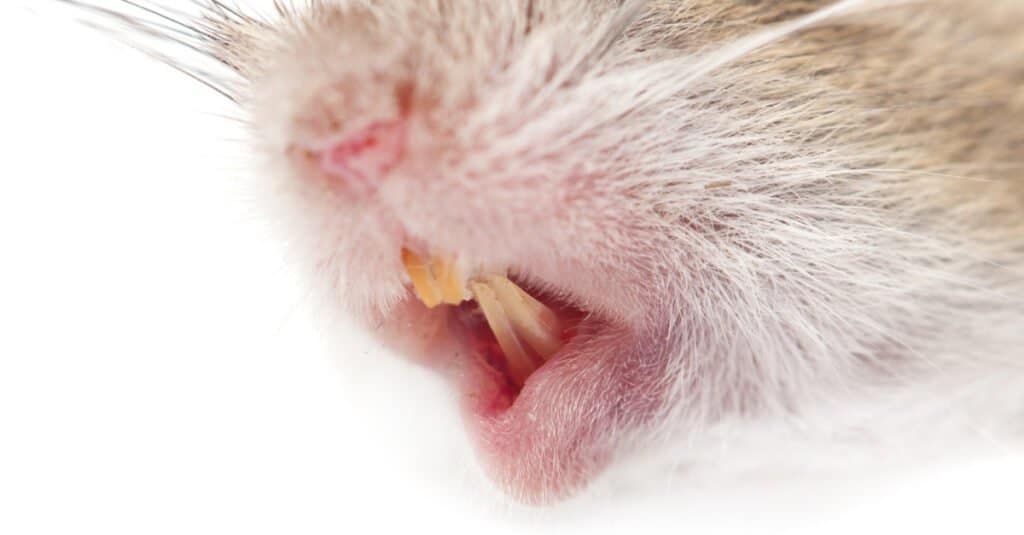When it comes to scaring people, rats rank right up there with snakes and spiders. Most people would scream if they saw a beady-eyed, yellow-toothed rat scuttling across the basement floor or darting down a city sidewalk. But did you know how powerful a rat’s jaw is?
Rat jaws are similar to alligator jaws in that they can exert up to 7,000 pounds of force per square inch, allowing them to quickly bite down at human bone.
The Powerful Jaws
Rats typically bite only when cornered. Then they bite hard—really hard. Their jaws are built like an alligator’s and can exert up to 7000 pounds of force per square inch, which means their teeth can easily slice down to the human bone, as one New York state biologist discovered when he picked up an errant lab rat with his hand.
It put its teeth straight through my index finger, The membrane over the bone is quite sensitive, and it was grinding its teeth back and forth. I get chills thinking about it.
Stephen C. Frantz, New York Biologist
Because their incisors never finished growing! Rats have 16 teeth, including four incisors, two on top and two on the bottom, and 12 molars, six on each side, with three on top and three on the bottom. Constant gnawing and bruxing, repetitively grinding incisors together, wear down their teeth and keep their incisors sharp. If their teeth were allowed to grow unchecked, they would spiral in an 86-degree spiral, making it impossible for the rat to close its mouth or eat, resulting in death. (Source: Earth Kind)
Wearing the Teeth
These pests will chew on anything that isn’t as hard as their teeth. The Mohs Scale, invented in 1812 by German mineralogist Friedrich Moh, measures the hardness of gemstones and minerals by their ability to scratch another gemstone or mineral. The scale goes from 1 (softest, like Talc) to 10. Hardest, such as Diamonds.
Rat teeth are about 5.5 on the Mohs scale, which makes them harder than iron or copper. Human tooth enamel has a Mohs hardness rating of about 5. Rats can chew through most materials used to keep them out because their teeth are so hard.
These critters are unafraid of hard materials like bricks, cinder blocks, and soft forms of concrete. They can penetrate softer metals such as aluminum sheeting, lead, copper, iron, and gold.
That means you shouldn’t use gold to keep rats out of your home! They can chew through even the hardest woods because they can chew through softer metals. They will usually chew through your home’s flooring and baseboards, especially where there are already smaller holes, such as near pipes. Thin glass, plastic (such as window and door screens and water pipes), drywall/sheetrock, asbestos, and electrical wires are the other materials they can pass through.
These rodents’ superhuman teeth aren’t their only superpower-like trait. Rats can fall 50 feet without injury, swim and tread water for three days without drowning, squeeze through quarter-sized openings, breed at an astonishing rate, rapidly populating any given area, and their genes have mutated, making them immune to most rat poisons. (Source: Earth Kind)
